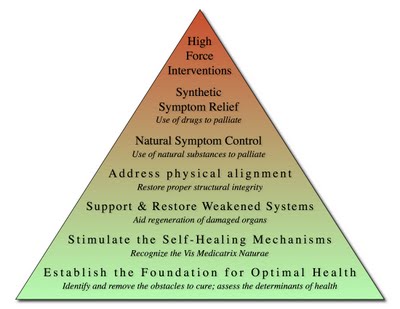Hello! My name is Dr. Erika Krumbeck (or “Dr. K” to my littlest patients). I am a
naturopathic doctor and licensed primary care physician in the state of Montana.I specialize in pediatrics, infertility and postpartum women.Most importantly - I am a Mom! I am passionate about providing accurate, helpful medical information for you and your family.I love sharing the latest research in medicine, debunking health myths, and providing an unbiased voice for controversial topics.This blog is also full of natural ways to safely heal yourself and your children.
Latest posts by Dr. Erika Krumbeck
(see all)This morning I had a fascinating conversation with a current medical student who wants to transfer from her allopathic school to Bastyr’s ND program. This young woman wants to be a primary care provider, and after much soul-searching decided it was in the best interest of herself and her future patients to study naturopathic medicine rather than the current medical model taught at allopathic school.
All this talk brought up a good question: so what is the difference really? What makes naturopathic medicine different from conventional medicine? What is the advantage of studying naturopathic medicine?
I touched upon this a little bit in my last post on naturopathic medical education. First, naturopathic physicians are experts in the treatment of primary care conditions, since our entire education focuses on primary care. Secondly, naturopathic doctors have extensive training in natural treatments options not taught in a traditional medical school, including hundreds of additional hours in botanical medicine, nutrition, osseous manipulation, homeopathy, and counseling. (Don’t believe me? Check out the curriculum on Bastyr’s website)
But the most striking difference between an allopathic primary care physician and a naturopathic physician is the philosophy that governs the treatment of our patient. Naturopathic medicine is characterized by six philosophical principles: 1) Treat the Whole, 2) Treat the Cause, 3) The Healing Power of Nature, 4) Prevention, 5) First Do No Harm, 6) Doctor as Teacher. I have previous blog posts on each of these (follow the links).
Now many healthcare practitioners will argue that these principles are not unique to naturopathic medicine, but that they follow these maxims as well. What is unique to naturopathic medicine? The Therapeutic Order. The Therapeutic Order is a set of guidelines to help physicians follow the philosophical principles. The goal of treatment is to completely resolve the patient’s symptoms and address the underlying cause while using the least force possible. Here is my illustration:

The Therapeutic Order helps physicians prioritize treatments and ensure that the least harm is done to the patient. Naturopathic physicians recognize that good health is the natural state of the body, and that disease results as a disturbance in the body’s environment. The first step of the Therapeutic Order aims to address what we call the “determinants of health,” the things which are necessary to create an environment of optimal health. These include things like adequate hydration, a healthy whole-foods based diet, sufficient exercise, a clean space to live in, safe and nourishing relationships, and a fulfilling spiritual practice. Naturopathic physicians seek to re-establish this foundation because any disturbance in the determinants of health will inevitably create disease, or “dis-ease”. There is much more to say about the determinants of health, so perhaps I will devote an entire blog entry to this in the future…
The next step in the order is to stimulate the Healing Power of Nature, or the Vis Medicatrix Naturae. Sometimes re-establishing the foundation of health is not enough to correct pathology. I like to think of this as the body’s version of Stockholm Syndrome – sometimes the body has been held hostage by pain and pathology for so long that simply restoring the foundation is not enough to provoke a healing response. In this case we can provide encouragement for the healing process to begin – things like constitutional hydrotherapy (I’ll explain later), acupuncture and homeopathy have been used by healers for centuries. I would also like to add prayer to that list, as prayer is a modality (one that I particularly like) that can also stimulate the healing process.
Next is to aid damaged organ systems. The American lifestyle that many of us practice (sometimes unwillingly!) can lead to sluggish or damaged organs because we are inhaling or ingesting products that are difficult for the body to process. Some examples: air pollution leading to lung damage, processed foods causing gut permeability, over-the-counter drugs producing kidney or liver deterioration. Naturopathic physicians have many tricks to rehabilitate organ systems (things like probiotics and flavonoids for the gut, or Silybum marianum for the liver).
The next step in the therapeutic order is to restore structural integrity to the body. This is the one step of the therapeutic order that can really fit anywhere in the order, and can be addressed at any point in the disease process. Structural misalignment of the spine and extremities can cause significant strain, and may be an obstacle in the path to cure. The goal of treatment is to realign the physical structure using the least force necessary. This may be a manual adjustment (similar to a chiropractice adjustment), a simple stretch, or a more subtle visceral manipulation.
Step up from this is our naturopathic symptom relief. This is what many people believe naturopathic medicine is about: using herbs, nutrients and natural products to reduce discomfort. As you can see, symptom relief is pretty high up the therapeutic order – natural symptom control is not curative, and does not fulfill the ultimate goal of naturopathic physicians: to see all our patients regain complete, optimal health, without the use of any substance. Using things like herbs and nutrients may be helpful for a period of time to decrease pain, or to suppress pathology until the foundation of health can be re-established. Some people, of course, may always need symptom relief for one reason or another, and this is completely appropriate as long as the underlying cause is not neglected.
Next in the therapeutic order, similar to the last step, is synthetic symptom control. This step constitutes the bulk of conventional medication, which typically prescribes pharmaceuticals for a myriad of conditions. When natural methods are either unavailable or insufficient, synthetic drugs may be used to relieve pain, lower blood pressure, suppress inflammation, etc. Naturopathic physicians are well versed in the appropriate use of pharmaceuticals, and will prescribe them when necessary to aid in healing the patient.
The highest step in the order is high force interventions. This includes chemotherapy, radiation therapy, and any surgery. Some naturopathic physicians call this “suppress pathology”. Though we use this step as a last resort, it may be the most appropriate for certain patients. Surgery, chemotherapy, and radiation can be life-saving, life-prolonging, or hugely quality-of-life improving measures for many patients. When pathology is unlikely to resolve on its own, these interventions may be a good choice.
Lastly I should point out that although naturopathic physicians clearly prioritize treatment by starting at the bottom of the therapeutic order, in actuality treatment may begin at any step at any time. It was Dr. Bastyr, the namesake of my university, who said (in my paraphrase) “always give the patient what the patient needs”. Whether that be water or chemotherapy, naturopathic physicians are experts at creating an individualized treatment plan that is perfect for each person.









pulsenaturopathy.com
October 19, 2011 at 9:53 amI love this post – thanks for the reminder.
Charlene
November 14, 2012 at 1:02 amNot sure I have ever heard of such a thing. Most people I know that end of going into alerntative medicine fields, whether is becoming a naturopathic doctor or a chiropractor, tend to have bachelor’s degrees in biomedical sciences, biology, chemistry, or psychology. Any of these degrees will be sufficient to prepare you for really any health care field, from physical therapy to naturopathic medicine to being an actual medical doctor.
pamela
April 10, 2013 at 8:14 pmGreetings! Very helpful advice within this
article! It is the little changes that will make the most important changes.
Thanks for sharing!
Pingback: Wisdom of Nature + Rigors of Modern Science | HEALTHYfashionista
February 7, 2014 at 8:10 am